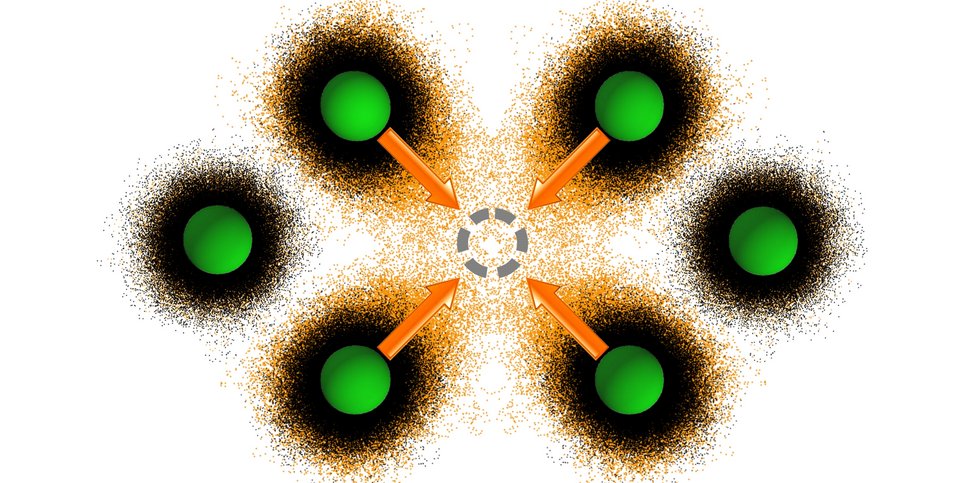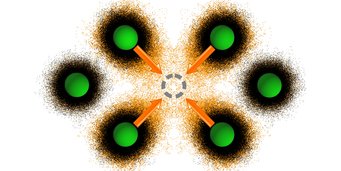Computer Made Materials
Physicists of the Max-Planck-Institut für Eisenforschung are able to predict the properties of structural and functional materials with hitherto unprecedented accuracy
Point defects, for example missing atoms (so called vacancies) significantly influence the performance and durability of modern materials. Even smallest defect concentrations of 1:100,000 can affect the properties of microelectronic devices like processors, solar cells and structural materials like steel.
Matter is made out of atoms, which form in the case of crystalline materials a highly ordered lattice. However, the individual atoms do not sit motionless on their lattice sites, but vibrate with an extremely high frequency around their positions – scientists therefore speak about lattice vibrations. To analyse the concentration of defects in a material and draw conclusions about the materials behaviour, there were until now two possible strategies: Theoretical physicists calculated the energy of the lattice-defect formation, which is directly linked to the number of defects, but their methods were limited to the absolute zero point, i.e. to -273.15 °C. Experimentalists, on the other hand, measured defect concentrations at high temperatures (above 300 °C). In fact, there was always a large temperature range without available data. As a matter of fact, it is exactly this range around room temperature that is important for materials that are used in our everyday life.

Physicists in the department ‘Computational Materials Design’ at the Max-Planck-Institut für Eisenforschung (MPIE) now achieved a breakthrough in the development of computer simulations that are also able to describe this missing temperature range. “Established methods for the energetics of lattices were previously not able to include the complex interaction of different modes of lattice vibrations. Thanks to various methodical breakthroughs, we are now able to remove this shortcoming for all relevant temperatures. And we were surprized to see how significantly these temperature-dependent interactions influence the amount of defects in a material”, explains Albert Glensk, doctoral student at the MPIE. “Formerly predicted results for defects in crystalline materials have to be corrected now. Our calculations show that actual defect energies might easily be about 20% lower than previous estimates. More importantly, we are now for the first time able to close the gap between theory and experiment. All experimental data can be perfectly described with our theory”, concludes Glensk.
With these new insights, scientists are able to calculate and predict precisely how many point defects a material has at a certain temperature and derive conclusions about the performance of a material. This serves as an additional corner stone for the optimization of basic materials on the computer and the prediction of their potential failures as well as strategies to avoid them in production processes.
Author: Yasmin Ahmed Salem, M.A.
